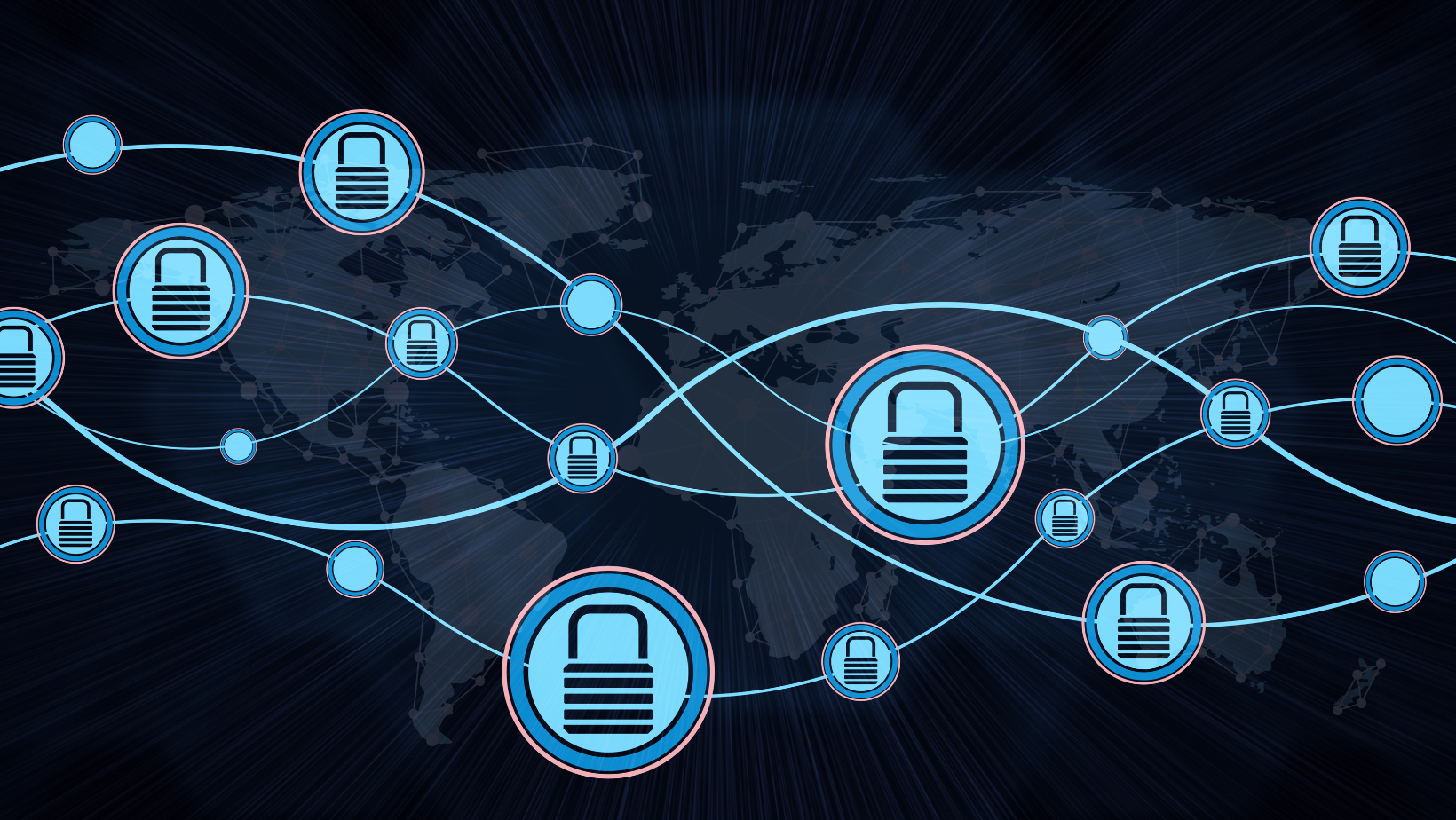Beginner’s Guide to Cybersecurity for Nonprofits
Learn essential cybersecurity for nonprofits. Protect sensitive data and prevent threats with expert tips and resources. Start securing today!
Learn essential cybersecurity for nonprofits. Protect sensitive data and prevent threats with expert tips and resources. Start securing today!
Discover the top 5 trustworthy trucking companies boosting American freight transportation with our in-depth review.
Discover how automation for real estate boosts efficiency, cuts costs, and enhances customer experience. Implement top tools today!
Discover top real estate transaction software to streamline deals. Explore features, solutions, and FAQs to enhance your business.
Discover top software for nonprofits to boost fundraising, manage donors, and streamline operations. Find affordable options today!
Discover if is ransomware a type of malware. Learn how it works, prevention tips, and its impact on businesses.
Discover effective strategies on “can antivirus prevent ransomware” and learn how to enhance your cybersecurity with layered protection.
In today’s ever-evolving workspace, remote working has become a game-changer. It’s redefining how we operate and collaborate, shaking up the traditional norms. Managing your team’s potential and ensuring their well-being and productivity is a whole new ball game. There’s no one-size-fits-all approach when it comes to remote teams. The key is understanding the unique nuances and intricacies of this way of working.
By implementing best practices and fostering trust, flexibility, and mutual respect, you can unlock previously untapped potential, boosting individual and collective performance. Navigating this new terrain may seem daunting, but this comprehensive guide will provide the tools and insights you need to lead your team in this digital age successfully. So, are you ready to transform your remote team into a powerhouse of productivity? Read on to unveil the secrets.

As businesses increasingly adopt a remote working model, it becomes paramount to understand the importance of managing remote teams effectively. Some key reasons include:
Boosted productivity remains one of the most compelling advantages of managing remote employees effectively. Employees working from their chosen environment can often focus better and produce higher quality work. They are free from the usual office distractions and can structure their day in a way that suits their personal working style.
For instance, a software developer might find they do their best coding during late-night hours, something that a traditional office setting wouldn’t accommodate. Giving them the freedom to work when they are most productive increases their output and improves their work quality. This is only possible when established best practices for remote work respect individual styles while ensuring overall team cohesion and goal alignment.
Enhancing work-life balance is another compelling reason to invest in best practices for remote teams. A well-balanced work-life scenario can significantly reduce stress and prevent burnout, often the pitfalls of the traditional 9-5 office setup. Remote work allows employees to create a schedule around their lives rather than trying to fit life around work. This flexibility means employees can attend to personal matters, such as picking their kids up from school or attending a mid-day yoga class, without impacting their work.
Take, for example, a graphic designer who thrives on creativity. By allowing them the freedom to take a mid-afternoon break to visit an art gallery for inspiration, they can return to their work refreshed and invigorated. This flexibility to harmonize personal interests and professional commitments can lead to enhanced job satisfaction, increased loyalty, and elevated performance levels, creating a win-win situation for both the employer and the employee.
Embracing the remote working model opens the door to a diverse, global talent pool, significantly broadening your team’s skills, experiences, and perspectives. This approach breaks down geographical boundaries that might otherwise limit your hiring options, giving you access to the best talent worldwide. For instance, a tech startup based in San Francisco could harness the expertise of a world-class cybersecurity specialist in Estonia, a seasoned AI engineer in India, or a leading UX designer in Denmark.
This wealth of global talent adds immense value to your team, fostering innovation, enhancing problem-solving capabilities, and paving the way for unique solutions that a homogeneous team might not conceive. The broader the spectrum of your team’s experiences and backgrounds, the greater your capacity to understand and cater to a diverse customer base and navigate the complexities of the global marketplace. Thus, effective remote team management promotes inclusivity and drives business growth and competitive advantage in today’s interconnected world.
Besides boosting productivity, enhancing work-life balance, and providing access to a diverse talent pool, effective remote team management can also reduce business overhead costs. Companies can save significant money by eliminating the need for physical office space and all its associated expenses, such as rent, utilities, maintenance, etc. This is particularly advantageous for startups and small businesses looking to minimize overhead costs and maximize profits.
For example, a digital marketing agency can operate with a fully remote team, eliminating the need for office space entirely. This reduces costs and allows companies to allocate more resources toward employee training, development, and well-being initiatives that ultimately benefit the team’s performance. Additionally, reduced overhead costs can lower client prices, making the business more competitive and attractive to potential customers.
Maintaining high employee retention rates is a strategic advantage that stems from effective remote team management. When employees are afforded the flexibility and autonomy inherent in working remotely, they often exhibit higher job satisfaction levels, leading to increased loyalty and lower turnover rates. This is particularly important in industries where the competition for top talent is fierce and the cost of hiring and training new employees is significant. For example, a remote employee working in the competitive tech industry.
They may have opportunities to switch to different companies, but the ability to work from home, avoid a stressful commute, and have a flexible schedule might be substantial factors that encourage them to stay with their current company. They can spend more time with their family, pursue hobbies, or further their education. This satisfaction with their work arrangement can make them less likely to seek opportunities elsewhere, leading to improved retention rates. Not only does this save the company resources regarding recruitment and training, but it also ensures the preservation of institutional knowledge and promotes a stable, experienced workforce.
Embracing remote work significantly enhances a business’s ability to weather unforeseen circumstances and maintain continuity in the face of disasters. Businesses with traditional office setups can face significant disruptions in scenarios such as a global pandemic or a natural disaster. However, companies implementing effective remote work practices can continue operations seamlessly, ensuring that productivity remains unhampered. For instance, during the COVID-19 pandemic, businesses with remote teams could adjust quickly and efficiently to the new work environment.
Additionally, remote working models mitigate risks associated with extreme weather conditions or other emergencies that may prevent employees from physically entering the office. This level of preparedness can give companies a competitive edge in the face of unpredictable events and ensure business continuity even in challenging times.

Managing a remote team successfully requires careful planning, effective communication, and the implementation of best practices. Below are key techniques to help you get the most out of your virtual team:
Establishing clear guidelines and expectations is important in managing a remote team effectively. These provide a framework to ensure all team members understand their responsibilities, deadlines, and expected work quality, promoting accountability and fostering a culture of trust and transparency. Guidelines should cover work hours, availability, communication protocols, productivity expectations, and tools to be used.
For instance, team members could be expected to respond to emails within a specified timeframe, or there could be designated hours for collaboration and meetings to accommodate different time zones. Expectations on project deadlines, quality of work, and regular update schedules should be unequivocally communicated.
Leveraging technology and tools is paramount for successful remote team management. In today’s digital age, a wealth of software and platforms is designed to facilitate collaboration, communication, project management, and productivity in a virtual work environment. Using these tools can help replicate the benefits of physical office space, maintaining team cohesion and ensuring projects stay on track.
For instance, project management tools like Trello or Asana allow teams to track progress, assign tasks, and manage deadlines effectively. Communication tools such as Slack or Microsoft Teams provide channels for real-time conversation, file sharing, and even video conferencing, keeping the lines of communication open and clear. Time tracking tools like Harvest or Toggl can help manage workloads and ensure fair distribution of tasks. It’s also important to utilize tools for secure data sharing, like Google Drive or Dropbox.
Fostering a positive team culture is of paramount importance for the success of a remote team. Establishing a palpable and cohesive culture within a remote workforce can be challenging, but it is an achievable objective with deliberate and strategic efforts. The key lies in creating a sense of belonging and connectivity among team members, which can be accomplished through regular communication, team-building activities, and recognizing and celebrating accomplishments.
For instance, virtual learning resources or happy hours can help maintain casual, non-work-related communication and create bonds similar to those in conventional office environments. Recognition of individual and team achievements, whether a shout-out in a team meeting or a public acknowledgment in a company newsletter, is crucial in fostering motivation and a cohesive team spirit. Furthermore, managers should strive to create an inclusive environment where every team member feels valued and heard and is encouraged to share personal life ideas and give feedback.
Effective communication is vital in managing a remote team, as it ensures that everyone is on the same page and allows for efficient collaboration. Effective communication becomes even more critical in virtual teams where non-verbal cues are absent. Managers should establish clear communication channels and ensure timely responses to inquiries to avoid delays or confusion. Additionally, it’s essential to use various communication methods and adapt to individual preferences.
For instance, some team members may prefer email for detailed updates, while others prefer quick chat messages or video calls. Additionally, managers should communicate regularly and proactively check in with team members to maintain a sense of connection and improve mental health.
Setting clear goals and tracking progress is essential to managing a remote team effectively. Establishing measurable and achievable objectives provides a roadmap for the team, outlining the tasks that need to be completed and the outcomes that are expected. Not only does this provide clarity and focus, but it also gives remote team members a sense of purpose, thereby boosting motivation and productivity. Furthermore, tracking progress allows managers to identify issues or bottlenecks early, ensuring that projects stay on track and deadlines are met.
This can be accomplished through regular check-ins, status reports, or project management tools visually representing progress. For instance, a team could use a tool like Jira, which allows for the creation of ‘Epics’ and ‘Stories,’ breaking down complex projects into manageable tasks. Team collaboration can then log their progress against these tasks, clearly showing how much work has been completed and what still needs to be done. This enables the team to stay aligned, fosters a sense of accomplishment as tasks are completed, and allows managers to provide timely support or resources where needed.
Promoting autonomy and trust is a vital aspect of managing remote teams effectively. When team members feel trusted and are given the autonomy to complete their tasks in ways that work best for them, they will likely be more engaged, productive, and satisfied. This can be achieved by setting clear expectations, providing the necessary resources, and allowing team members to complete their tasks without micromanagement.
Managers should also express confidence in their team’s abilities and recognize their efforts, which can foster a sense of trust and respect. For instance, regular check-ins could be transformed into opportunities for guidance and support rather than strict oversight. This approach bolsters self-confidence and motivation among team members and cultivates a sense of mutual trust and respect.
Properly onboarding and training new team members is a crucial aspect of remote team management. The onboarding process should be thorough, engaging, and designed to acquaint new hires with the company culture, mission, work processes, and tools. Providing adequate training to equip them with the knowledge and skills they need to perform their tasks effectively is also essential.
The key is to balance providing enough information to set them up for success without overwhelming them with too much data all at once. For instance, an effective onboarding process could involve a welcome session, an introduction to team members, walkthroughs of the most commonly used tools, and an overview of the company’s policies and procedures. Training sessions can also be conducted periodically as new tools are introduced or when the work process changes significantly.

While there are many remote work best practices, there are also some common pitfalls to avoid. These include:
Managing a remote team can present unique challenges, but the right approach and tools can increase productivity, satisfaction, and growth. The key lies in forming clear communication channels, setting achievable goals, promoting autonomy, and properly onboarding team members. It’s also crucial to avoid pitfalls like lack of communication, micromanaging, inadequate technology, and neglecting team dynamics.
By fostering a culture of trust, respect, and inclusivity and leveraging technology to bridge distances, managers can overcome the challenges of remote work and harness its potential benefits. As we navigate the evolving work landscape, these best practices will serve as the blueprint for teams to work remotely.
Explore ransomware attack strategies, impacts, and prevention. Learn to identify threats and protect your data effectively.
Every day, new cyber threats and attacks emerge, putting individuals and organizations at risk of losing valuable data and sensitive information. In today’s digital age, cybersecurity has become more critical. With rapidly advancing technology, cybercriminals have found new ways to exploit vulnerabilities in computer systems and networks. One such method that has gained traction in recent years is spooling. If you’re wondering what spooling is and how it impacts cybersecurity, keep reading to learn more.
A spooling attack is a type of security exploit where a malicious program or process imitates a legitimate one using its spool or buffer. In computing, spooling is a process where data is temporarily held to be used and executed by a device, program, or system. In a spooling attack, the attacker manipulates the spooling process to gain unauthorized access to a system, often to execute tasks without detection by masquerading as a legitimate operation.
These simultaneous peripheral operations can significantly threaten computer and network security. For example, a spooling attack can access a printer’s buffer and insert malicious code that can compromise the entire network. The attacker could also use spooling to redirect print jobs to a different location, potentially exposing sensitive information or disrupting business operations.

While print spooling is the most common form, other types are equally important in cybersecurity. Here are the most common types of spooling available:
Disk spooling attacks are cyber attacks that target the temporary storage space, or spool, on a computer’s hard drive. This type of attack can occur when an adversary gains access to the print spooler service on a computer and manipulates it to store malicious code or data in the spool file. This can then be used to compromise the system or steal sensitive information.
For example, a disk spooling attack could implant malware into a print job, which would then be executed when the document is printed and the spool file is accessed. This attack can be difficult to detect and prevent, making it a popular choice for cybercriminals seeking access to systems or data. To protect against disk spooling attacks, it is important to regularly update and secure the print spooler service on your computer and use strong security measures such as firewalls and antivirus software.
Network spooling attacks occur when an attacker gains access to a network’s print spooler service and manipulates it to redirect print jobs to their own malicious server. This allows the attacker to intercept sensitive information such as usernames, passwords, or confidential documents printed on the network. For example, an employee may unknowingly send a print job containing sensitive company information to the network printer, which is then redirected to the attacker’s server and stolen.
To prevent network spooling attacks, securing the print spooler service on all devices connected to the network and regularly monitoring for any unusual activity or unauthorized access attempts is important. Strong encryption methods can also protect against the interception of sensitive print jobs. In addition, it is crucial to educate employees about the risks of network spooling attacks and how to identify and report any suspicious activity. Secure printing methods, such as requiring user authentication before releasing a print job, can also help prevent these attacks.
Memory spooling attacks are similar to disk spooling attacks, but instead of targeting the hard drive’s temporary storage space, they target a computer’s memory. This attack can occur when an adversary gains access to the print spooler service and manipulates it to store malicious code or data in the computer’s memory. This can then be used to compromise the system or steal information.
To protect against memory spooling attacks, it is important to regularly update and secure the print spooler service on your computer and use strong security measures such as firewalls and antivirus software. Additionally, limiting access to the print spooler service and implementing strict user authentication measures can help prevent unauthorized access and manipulation of the system’s memory.
Web spooling attacks occur when an attacker gains access to a web server’s print spooler service and manipulates it to store malicious code or data in the temporary storage space on the server. This can then be used to compromise the server or steal sensitive information from users accessing the website. These attacks are particularly dangerous as they can target many users at once.
Regular updates and security measures for the print spooler service on web servers are crucial to prevent web spooling attacks. Secure coding practices and HTTPS encryption can also help protect against these attacks. Educating website users about the risks of web spooling attacks and how to identify and report suspicious activity is also important.
Buffer overrun attacks target a computer’s memory by overflowing a buffer, a temporary storage area used to access data. This attack can occur when an attacker gains access to the print spooler service and manipulates it to save data temporarily than the buffer can handle, causing it to overflow and potentially allowing the attacker to execute malicious code. To protect against buffer overrun attacks, regularly updating and securing the print spooler service and implementing strict user authentication measures can help prevent unauthorized access.
Denial of Service (DoS) attacks target a computer or network by flooding it with too many requests, overwhelming the system, and causing it to crash or become unavailable. This attack can occur when an attacker gains access to the print spooler service and manipulates it to send simultaneous peripheral operation print requests, thereby overloading the system. To protect against DoS attacks, regularly monitoring for any unusual activity on the print spooler service and implementing network security measures such as firewalls and intrusion detection systems is important.
Man-in-the-middle (MitM) attacks occur when an attacker intercepts communication between two parties, gaining access to sensitive information such as malicious printer driver login credentials or financial data. This attack can occur when an adversary gains access to the print spooler service and manipulates it to intercept print jobs containing sensitive information. To protect against MitM attacks, regularly updating and securing the print spooler service and strong encryption methods can help prevent attackers from intercepting sensitive data. It is also important to educate users about MitM attacks’ risks and how to communicate sensitive information securely.

While spooling attacks are a significant threat to computer systems, there are various factors that should be considered when dealing with them. These factors include ten of the following:
Spooling attacks can be categorized into two main types: print spooler and job spooler attacks. Print spooler attacks occur when an attacker gains unauthorized access to the print queue of a computer system, allowing them to intercept sensitive documents or inject malicious code into the printing process. On the other hand, job spooler attacks involve manipulating or deleting scheduled jobs in a system’s job queue.
This attack can lead to losing important data or disrupt critical processes. For example, an attacker could manipulate a scheduled backup job in a company’s server, resulting in the loss of important files and potentially crippling the entire network.
Ensuring a robust system configuration is paramount to preventing spooling attacks. This involves setting up stringent user access controls to limit unauthorized individuals from accessing critical queues like print and job queues. It’s also crucial to keep all software and hardware updated with the latest security patches, as outdated versions can offer a potential entry point for attackers.
For instance, the infamous Stuxnet worm was able to cause havoc in Iran’s nuclear program through a print spooler vulnerability in their Windows operating systems, which allowed the worm to spread and eventually cause physical damage to the centrifuges. Similarly, systems administrators should regularly review and clean job queues to prevent unauthorized or suspicious tasks from running. Periodically checking the integrity of system files and databases can also help detect any potential spooling attacks early. Hence, awareness, regular updates, and proactive monitoring are key in securing systems against spooling attacks.
Constant vigilance and regular updating of software and firmware are crucial in mitigating the threat of spooling attacks. Many of these attacks exploit vulnerabilities in out-of-date operating systems, server software, or application software, making systems with lapsed updates an attractive target for cybercriminals. For instance, an older version of a printer’s firmware may not have safeguards against unauthorized access to the print queue, making it susceptible to print spooler attacks.
An attacker could intercept sensitive documents, alter them, or even inject malicious code into the printing process. Similarly, outdated job scheduling software could be vulnerable to job spooler attacks. In these attacks, the perpetrator might manipulate or delete scheduled tasks, causing significant disruption to crucial operations.
Educating employees on the potential risks and tactics used in spooling attacks can reduce the likelihood of such attacks being successful. Many spooling attacks rely on social engineering techniques, where an attacker tricks an unsuspecting employee into divulging sensitive information or granting access to critical systems.
For example, a hacker may pose as an IT technician and ask an employee to provide their login credentials or run a fake software update that installs malware onto the system. Organizations can greatly reduce the risk of falling victim to spooling attacks by training employees to recognize these tactics. Employees should also be aware of the importance of regularly updating their passwords and not sharing them with anyone, as compromised login credentials are often used in spooling attacks.

Despite these considerations, spooling offers numerous benefits that make it a valuable tool in cyber security. Some of its key benefits include:
Spooling can greatly enhance system performance by optimizing data transfer and reducing bottlenecks. For example, print spooling allows multiple users to send print jobs simultaneously without waiting for each other’s documents to finish printing. This results in more efficient use of resources and faster document processing, improving overall productivity.
Similarly, disk spooling reduces the strain on the server by storing spooled data on external drives, freeing up system resources for other tasks. This can greatly improve the speed and performance of the system, especially in high-demand environments. Overall, spooling helps to streamline data transfer and reduce delays, resulting in increased system performance.
Spooling not only enhances security but also improves data management by centralizing it. Print spooling stores all print jobs in a centralized queue, reducing the risk of unauthorized access to confidential documents. Users can only gain access to their files through proper authentication, ensuring the protection of sensitive information.
Moreover, disk spooling facilitates easy encryption of data stored on external drives, adding an extra layer of security to the system. This feature helps prevent security breaches from unnecessary servers and safeguards sensitive data from unauthorized access.
Spooling offers enhanced flexibility in data transfer and storage. With print spoolers, users can conveniently queue their print jobs and access them from any network-connected printer. This is particularly beneficial in large organizations with multiple printers, allowing for greater convenience and flexibility in the printing process.
Disk spooling also simplifies data transfer between different systems or devices. For instance, if a user needs to retrieve a large file from a colleague’s computer, they can effortlessly spool it onto an external drive instead of waiting for the entire file to be transferred.
Resources are often limited in any organization, making it crucial to optimize their usage. Spooling helps with this by effectively managing system resources and reducing wastage. Windows print spooler can hold documents in the queue until the printer is available, preventing paper and ink waste from abandoned print jobs.
Disk spooling also allows for better management of storage space by optimizing the use of external drives. This can greatly reduce the need for additional storage devices, saving costs and resources.

While spooling offers numerous benefits, there are some pitfalls to avoid when implementing it in an organization. These include the following:
One of the key ways to avoid spooling attacks is by implementing strong access controls. This means limiting the number of users accessing sensitive data. By doing so, organizations can ensure that all non-administrative users are able to manipulate and interact with spooled information, reducing the risk of a security breach.
For example, a company may limit access to its payroll system, which utilizes spooling to print out employee paychecks. Only allowing authorized HR personnel access to this information greatly reduces the risk of a malicious insider gaining unauthorized access, which helps prevent spooling attacks.
It’s crucial for organizations to regularly monitor and audit their system logs to identify any potential spooling attacks. By closely monitoring system logs, unusual activity can be quickly identified and addressed before it leads to a larger security breach.
For instance, if an attacker gains access to the spooler in order to intercept sensitive documents, this activity would likely be recorded in the system log. Through regular monitoring and auditing, organizations can quickly catch and mitigate such attacks before they cause serious harm.
User-generated scripts can often be a source of vulnerability in spooling systems. This is because these scripts may contain malicious code that can exploit vulnerabilities in the spooler software. To avoid this, organizations should limit the use of user-generated scripts and instead rely on trusted, vetted scripts or applications for spooling tasks.
In addition, any user-generated scripts should be carefully reviewed and tested before being implemented in a production environment. This can help identify and eliminate potential security risks before attackers can exploit them.
Like with any software, it’s crucial to regularly update the spooler software to ensure that known vulnerabilities are patched, and new security features are implemented. Organizations should regularly review vendor releases and apply updates in a timely manner to keep their systems secure.
In addition, organizations should also monitor for any potential zero-day vulnerabilities or exploits that may target the spooler software. This can help mitigate any risks before attackers exploit them.
For those in the cyber security field, spooling is a valuable tool that offers numerous benefits. It can enhance system performance, improve security, offer flexibility, and better resource management. However, it is crucial to consider potential pitfalls and ensure proper implementation for maximum effectiveness.
Spooling can be a highly effective way of transferring data temporarily between computers. With the proper support and maintenance, it can be a reliable and secure system for organizations. By adhering to the best practices outlined in this article, businesses can ensure that their spooler systems are running smoothly and securely.